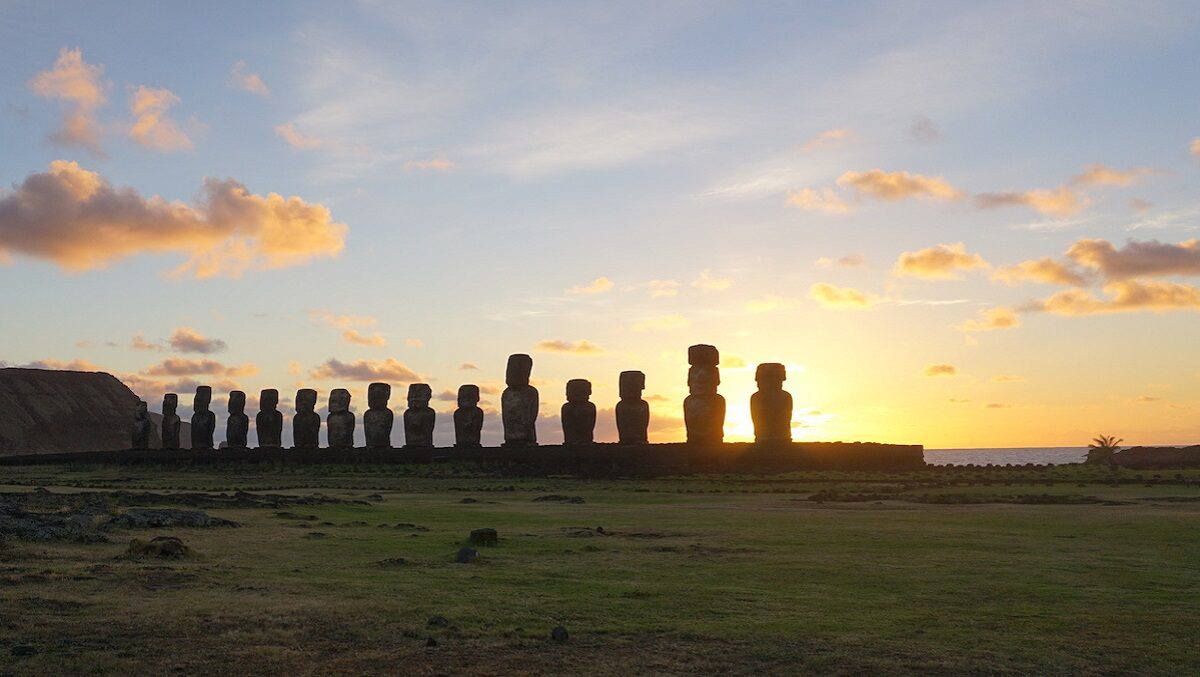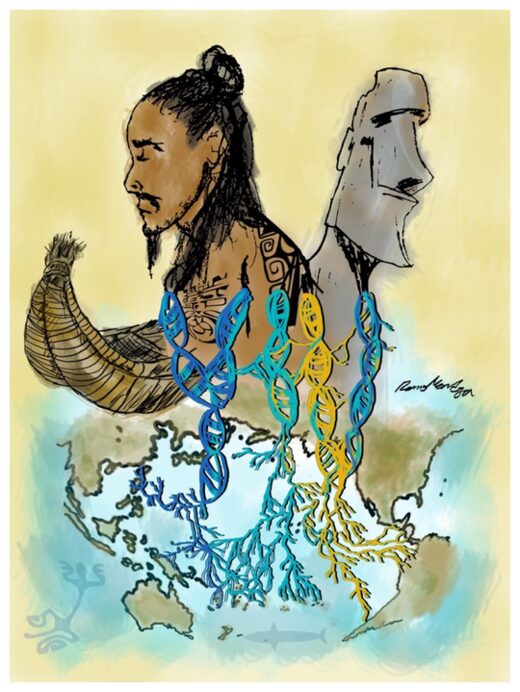
© Andres Moreno-EstradaThe Tongariki site on Rapa Nui (Easter Island).
Native Americans had a genetic and cultural influence on Polynesia more than five centuries before the arrival of Europeans in the region, a new study suggests.And it didn't all start in the obvious place - Rapa Nui (Easter Island) - according to the international team of researchers.
They say evidence shows first contact was on one of the archipelagos of eastern Polynesia, such as the South Marquesas, as proposed by the late Norwegian explorer Thor Heyerdahl, who made his famous drift voyage from Peru to Polynesia on the raft
Kon-Tiki in 1947.
The new study, which is described in a
paper in the journal
Nature, was led by Andrés Moreno-Estrada, from Stanford University, US, and Alexander Ioannidis from Mexico's National Laboratory of Genomics for Biodiversity.
With colleagues they examined the genomes of more than 817 people from 17 island populations and 15 Pacific coast Native American groups and found "conclusive evidence" for contact around 1200 CE, "contemporaneous with the settlement of remote Oceania".
"Our analyses suggest strongly that a single contact event occurred in eastern Polynesia, before the settlement of Rapa Nui, between Polynesian individuals and a Native American group most closely related to the indigenous inhabitants of present-day Colombia," they write.

© Ruben Ramos-Mendoza
Previous studies have examined ancient DNA, but this is often degraded, the researchers say. They chose to take a "big data" approach by studying people alive today.
Computational methods allowed them to work out probable genetic ancestry and ancestral geographical origins through studies of gene flow.
They also could distinguish between different modern colonial admixtures; for example, a large French influence in what is known as French Polynesia, and Spanish / Chilean influence in Rapa Nui.
The findings are the latest food for thought in what has been a long and often contentious debate about whether voyaging contact actually happened. There are strong views on both sides and, as the researchers note, previous studies have reached opposing conclusions.
And they acknowledge that they also "cannot discount" an alternative explanation: that a group of Polynesian people voyaged to northern South America and returned together with some Native American individuals, or with Native American admixture.
Nevertheless, they say, they can "show that evidence for early Native American contact is found on widely separated islands across easternmost Polynesia, including islands not influenced by more recent Native American contact events".
"These spectacular results have major implications for future discussions concerning early migrations and interactions in Polynesia," notes Paul Waller, from Sweden's Uppsala University in a related commentary.
From an archaeological viewpoint, he adds, the next step would be to assess how well their model fits with material-culture studies, ethno-historical records, linguistics and evidence of plant and animal distributions.


Reader Comments